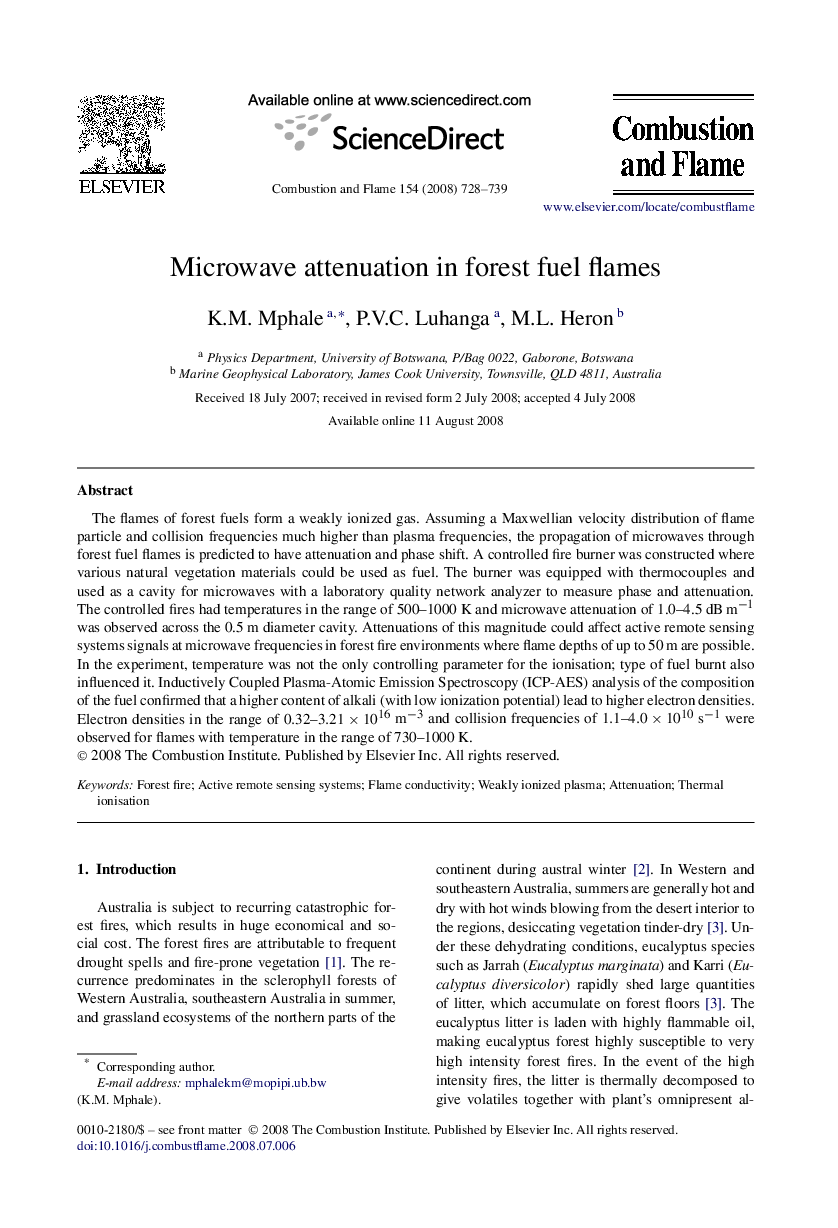| Article ID | Journal | Published Year | Pages | File Type |
|---|---|---|---|---|
| 167720 | Combustion and Flame | 2008 | 12 Pages |
The flames of forest fuels form a weakly ionized gas. Assuming a Maxwellian velocity distribution of flame particle and collision frequencies much higher than plasma frequencies, the propagation of microwaves through forest fuel flames is predicted to have attenuation and phase shift. A controlled fire burner was constructed where various natural vegetation materials could be used as fuel. The burner was equipped with thermocouples and used as a cavity for microwaves with a laboratory quality network analyzer to measure phase and attenuation. The controlled fires had temperatures in the range of 500–1000 K and microwave attenuation of 1.0–4.5 dB m−1 was observed across the 0.5 m diameter cavity. Attenuations of this magnitude could affect active remote sensing systems signals at microwave frequencies in forest fire environments where flame depths of up to 50 m are possible. In the experiment, temperature was not the only controlling parameter for the ionisation; type of fuel burnt also influenced it. Inductively Coupled Plasma-Atomic Emission Spectroscopy (ICP-AES) analysis of the composition of the fuel confirmed that a higher content of alkali (with low ionization potential) lead to higher electron densities. Electron densities in the range of 0.32–3.21×1016 m−30.32–3.21×1016 m−3 and collision frequencies of 1.1–4.0×1010 s−11.1–4.0×1010 s−1 were observed for flames with temperature in the range of 730–1000 K.
